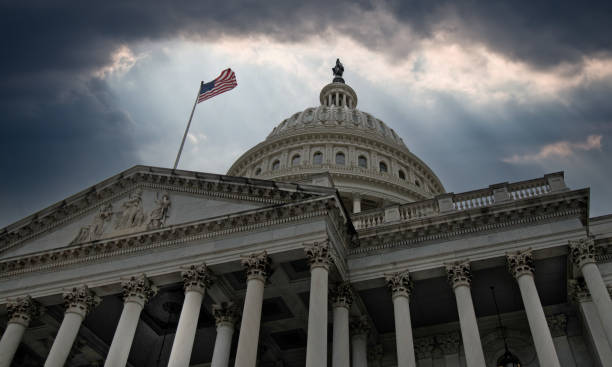
During the Federal Reserve‘s January 30-31 meeting, the majority of policymakers expressed apprehensions about the potential risks of reducing interest rates prematurely, amidst widespread uncertainty regarding the optimal duration for maintaining the current restrictive monetary stance. This stance is deemed necessary to guide inflation back to the Fed‘s 2% target, as detailed in the recently released minutes.
Balancing Act: Policy Tightening and Economic Risks
- Policy Stance Uncertainty: The minutes highlighted a significant level of uncertainty among participants about the duration for which a restrictive monetary policy should be upheld to achieve the Fed’s inflation target.
- Concerns Over Early Easing: The consensus leaned towards the risks associated with an overly hasty easing of policy. A few participants, however, warned against the economic downturns that could stem from maintaining an excessively restrictive stance for an extended period.
Following the publication of the minutes, U.S. stocks experienced a downturn before rallying later in the session. Meanwhile, the U.S. dollar remained relatively stable against a basket of currencies, and U.S. Treasury yields saw an increase.
Fed’s Cautious Approach to Rate Cuts
The minutes reinforced the message from Fed officials that any prospective rate cuts, anticipated by some to commence this year, will not be rushed. Richmond Fed President Thomas Barkin voiced concerns on SiriusXM regarding persistent inflation, particularly in the services and housing sectors. Recent data, indicating strong job growth and higher-than-expected inflation rates, complicates the decision-making process for rate cuts, according to Barkin.
Upcoming Speeches and Policy Signals
Speeches by top Fed officials, including Vice-Chair Philip Jefferson and Governors Lisa Cook and Christopher Waller, are expected to shed further light on how recent economic data might influence discussions on potential rate adjustments.
Quincy Krosby, Chief Global Strategist at LPL Financial, noted, “The message from the minutes, combined with forthcoming remarks from Fed speakers, suggests a cautious stance towards premature policy easing, especially in light of recent inflation upticks.”
Inflation and Economic Indicators
- Data from last week indicated that core consumer inflation remains at an annual rate of 3.9%, propelled by rising housing costs.
- Despite confidence in the ability to lower the policy rate later this year, Fed officials have emphasized the need for greater assurance of declining inflation before initiating rate cuts.
Economic Risks and Balance Sheet Considerations
- Economic Performance and Inflation: Some Fed officials expressed concerns that inflation progress might stall if the economy continues to outperform expectations.
- Financial System Vulnerabilities: Fed staff identified several risks, including vulnerabilities in the U.S. financial system and potential delays in inflation reduction, which could dampen economic activity more than anticipated.
Investors anticipate the Fed to start reducing borrowing costs by June, even as decisions loom on the cessation of balance sheet reduction efforts. The minutes hinted at in-depth discussions on balance sheet policy scheduled for the March meeting.
Market Dynamics and Financial Conditions
The easing of financial conditions observed in the fourth quarter appeared to have stabilized by the end of January. However, the economic landscape presents a mixed picture, with Treasury yields rising and stocks reaching record highs.
Ryan Sweet, Chief U.S. Economist at Oxford Economics, found the Fed’s cautious stance towards rate cuts peculiar, suggesting that an overly tight policy could inadvertently lead to economic strain. Sweet advocates for proactive measures to ensure a smooth economic landing, cautioning against the consequences of delayed action.
The January FOMC meeting minutes offer a glimpse into the Federal Reserve’s deliberative process, balancing the need to combat inflation against the risks of economic downturns due to premature policy adjustments. As the Fed navigates through these complex economic indicators, the coming months will be critical in shaping the trajectory of U.S. monetary policy and its implications for the broader economy.
Featured image credit: Douglas Rissing via iStock
